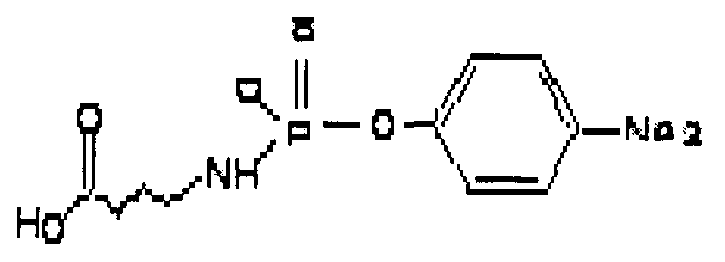Hybridoma cell line F3A2, monoclonal antibody produced by hybridoma cell line F3A2 and application
A hybridoma cell line, monoclonal antibody technology, applied in microorganisms, biochemical equipment and methods, instruments, etc., can solve the problems of complex processing, long time and high cost, and achieve high sensitivity and good specificity.
- Summary
- Abstract
- Description
- Claims
- Application Information
AI Technical Summary
Problems solved by technology
Method used
Image
Examples
Embodiment 1
[0015] Example 1: Screening of hybridoma cell line F3A2
[0016] 1. Animal immunization
[0017] Methyl parathion artificial immunogen was used to immunize 6-week-old BAlB / C mice. For the first immunization, the methyl parathion immunogen was emulsified with an equal volume of Freund's complete adjuvant, and injected intraperitoneally into mice. For the second immunization, the methyl parathion immunogen was emulsified with an equal volume of Freund's incomplete adjuvant, and the injection method was the same as that of the first immunization, with an interval of 3 weeks. The third, fourth, and fifth immunizations were the same as the second immunization, and the intervals were 2 weeks. After the third immunization, 7-8 days after each immunization, blood was collected from the tail vein of the mice, the serum was separated, and the titer of the mouse serum was detected by indirect ELISA. After the last immunization, in addition to monitoring the titer of the serum, the sen...
Embodiment 2
[0039] Example 2: Antibody Application
[0040] The monoclonal antibody obtained above is applied to the establishment of an enzyme-linked immunosorbent method for the detection of methyl parathion, and is used for the determination of the content of methyl parathion in agricultural products. The specific steps are as follows:
[0041] (1) Coating: Dilute the coating antigen 1000 times with coating buffer (0.05mol / L, pH9.6) and add it to the microtiter plate, 50 μl per well, and incubate in a 37°C incubator for 2 hours;
[0042] (2) Plate washing: wash 5 times with washing solution PBST (0.05% Tween 20, 0.01mol / L, pH7.4), and pat dry with absorbent paper;
[0043] (3) Blocking: add 120 μL of 0.1% gelatin to each well, and incubate at 37° C. for 1.5 h;
[0044] (4) Plate washing: same as (2);
[0045] (5) Add methyl parathion and antibody mixture: add 25 μL of pesticide solution (diluted in PBST) with a concentration of 100 μg / mL to each well, then add 25 μL of cell supernata...
Embodiment 3
[0053] Embodiment 3: Evaluation of the above-mentioned ELISA detection method
[0054] 1. Evaluation of cross-reaction: The specificity of the detection method is judged by evaluating the cross-reaction between the ELISA method and a series of organophosphorus pesticides. The pesticides to be tested include fenitrothion, parathion, isocarbophos, chlorpyrifos-methyl, phoxim, etc. Using these pesticides as competitors, the IC50 value obtained in the immunoelectrochemical detection method is used to calculate the cross-reactivity of the detection method. The specific calculation method is as follows:
[0055] CR(%)=[IC 50 (Methylparathion) / IC 50 (tested competitor)] × 100, in the formula, the cross-reactivity rate of the detection system to methyl parathion is set as 100%.
[0056] 2. Evaluation of accuracy: The accuracy of the system is judged by testing the anti-interference ability of the detection method on the actual sample matrix. We choose vegetables, water and soil as...
PUM
 Login to View More
Login to View More Abstract
Description
Claims
Application Information
 Login to View More
Login to View More - R&D
- Intellectual Property
- Life Sciences
- Materials
- Tech Scout
- Unparalleled Data Quality
- Higher Quality Content
- 60% Fewer Hallucinations
Browse by: Latest US Patents, China's latest patents, Technical Efficacy Thesaurus, Application Domain, Technology Topic, Popular Technical Reports.
© 2025 PatSnap. All rights reserved.Legal|Privacy policy|Modern Slavery Act Transparency Statement|Sitemap|About US| Contact US: help@patsnap.com

